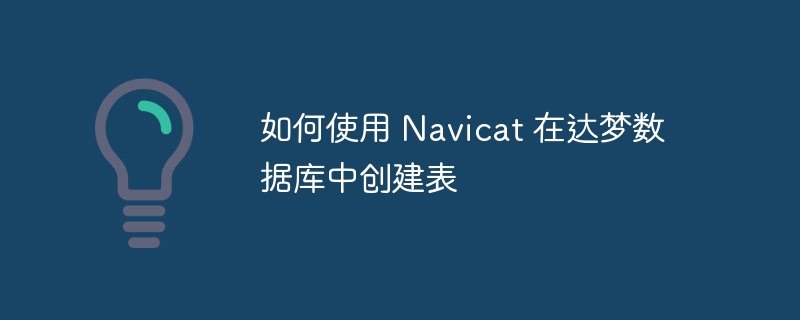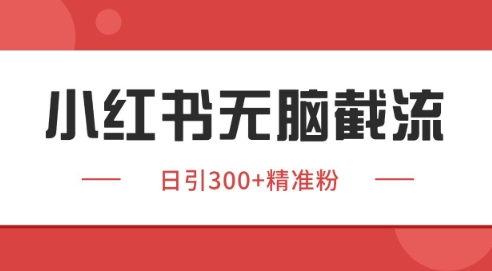
在正確的用例中,布隆過濾器看起來就像魔法。這是一個大膽的說法,但在本教程中,我們將探討這種奇怪的數(shù)據(jù)結(jié)構(gòu)、如何最好地使用它,以及一些使用 Redis 和 Node.js 的實際示例。
布隆過濾器是一種概率性、單向數(shù)據(jù)結(jié)構(gòu)。在這種情況下,“過濾器”一詞可能會令人困惑;過濾器意味著它是一個活躍的事物,一個動詞,但將它視為存儲,一個名詞可能更容易。使用簡單的布隆過濾器,您可以做兩件事:
- 添加一個項目。
- 檢查之前是否未添加過某個項目。
這些是需要理解的重要限制 – 您無法刪除項目,也無法在布隆過濾器中列出項目。此外,您無法確定過去是否已將某個項目添加到過濾器中。這就是布隆過濾器的概率性質(zhì)發(fā)揮作用的地方——誤報是可能的,但誤報則不然。如果過濾器設(shè)置正確,誤報的可能性會非常小。
存在布隆過濾器的變體,它們添加了其他功能,例如刪除或縮放,但它們也增加了復(fù)雜性和限制。在繼續(xù)了解變體之前,首先了解簡單的布隆過濾器非常重要。本文僅介紹簡單的布隆過濾器。
有了這些限制,您可以獲得許多好處:固定大小、基于哈希的加密和快速查找。
當(dāng)您設(shè)置布隆過濾器時,您需要為其指定一個大小。此大小是固定的,因此如果過濾器中有一項或十億項,它永遠(yuǎn)不會增長超過指定的大小。當(dāng)您向過濾器添加更多項目時,誤報的可能性就會增加。如果您指定了較小的過濾器,則與使用較大的過濾器相比,誤報率會增加得更快。
布隆過濾器建立在單向散列的概念之上。與正確存儲密碼非常相似,布隆過濾器使用哈希算法來確定傳入其中的項目的唯一標(biāo)識符。哈希本質(zhì)上是無法逆轉(zhuǎn)的,并且由看似隨機的字符串表示。因此,如果有人獲得了布隆過濾器的訪問權(quán)限,它不會直接泄露任何內(nèi)容。
最后,布隆過濾器速度很快。與其他方法相比,該操作涉及的比較次數(shù)要少得多,并且可以輕松存儲在內(nèi)存中,從而防止影響性能的數(shù)據(jù)庫命中。
現(xiàn)在您已經(jīng)了解了布隆過濾器的限制和優(yōu)點,讓我們來看看可以使用它們的一些情況。
設(shè)置
我們將使用 Redis 和 Node.js 來說明 Bloom 過濾器。 Redis 是 Bloom 過濾器的存儲介質(zhì);它速度快,位于內(nèi)存中,并且有一些特定的命令(GETBIT、SETBIT),可以提高實施效率。我假設(shè)您的系統(tǒng)上安裝了 Node.js、npm 和 Redis。您的 Redis 服務(wù)器應(yīng)該在 localhost 上的默認(rèn)端口上運行,以便我們的示例正常工作。
在本教程中,我們不會從頭開始實現(xiàn)過濾器;而是從頭開始實現(xiàn)過濾器。相反,我們將重點關(guān)注 npm 中預(yù)構(gòu)建模塊的實際用途:bloom-redis。 bloom-redis 有一組非常簡潔的方法:add、contains 和 clear。
如前所述,布隆過濾器需要哈希算法來生成項目的唯一標(biāo)識符。 bloom-redis 使用眾所周知的 MD5 算法,盡管它可能不適合 Bloom 過濾器(有點慢,有點過大),但可以正常工作。
獨特的用戶名
用戶名,尤其是在 URL 中標(biāo)識用戶的用戶名,需要是唯一的。如果您構(gòu)建一個允許用戶更改用戶名的應(yīng)用程序,那么您可能需要一個從未使用過的用戶名,以避免用戶名混淆和被攻擊。
如果沒有布隆過濾器,您需要引用一個包含曾經(jīng)使用過的每個用戶名的表,而大規(guī)模時這可能會非常昂貴。布隆過濾器允許您在用戶每次采用新名稱時添加一個項目。當(dāng)用戶檢查用戶名是否被占用時,您所需要做的就是檢查布隆過濾器。它將能夠絕對確定地告訴您所請求的用戶名是否先前已添加。過濾器可能會錯誤地返回用戶名已被使用,而實際上用戶名尚未被使用,但這只是為了謹(jǐn)慎起見,不會造成任何真正的傷害(除了用戶可能無法聲明“k3w1d00d47”) .
為了說明這一點,讓我們使用 Express 構(gòu)建一個快速的 REST 服務(wù)器。首先,創(chuàng)建 package.json 文件,然后運行以下終端命令。
npm 安裝bloom-redis –save
npm install express –save
npm install redis –save
bloom-redis 的默認(rèn)選項大小設(shè)置為 2 MB。出于謹(jǐn)慎考慮,這是錯誤的,但它相當(dāng)大。設(shè)置布隆過濾器的大小至關(guān)重要:太大會浪費內(nèi)存,太小則誤報率會太高。確定大小所涉及的數(shù)學(xué)非常復(fù)雜,超出了本教程的范圍,但幸運的是,有一個布隆過濾器大小計算器可以完成這項工作,而無需破解教科書。
現(xiàn)在,創(chuàng)建 app.js 如下:
var Bloom = require('bloom-redis'), express = require('express'), redis = require('redis'), app, client, filter; //setup our Express server app = express(); //create the connection to Redis client = redis.createClient(); filter = new Bloom.BloomFilter({ client : client, //make sure the Bloom module uses our newly created connection to Redis key : 'username-bloom-filter', //the Redis key //calculated size of the Bloom filter. //This is where your size / probability trade-offs are made //http://hur.st/bloomfilter?n=100000&p=1.0E-6 size : 2875518, // ~350kb numHashes : 20 }); app.get('/check', function(req,res,next) { //check to make sure the query string has 'username' if (typeof req.query.username === 'undefined') { //skip this route, go to the next one - will result in a 404 / not found next('route'); } else { filter.contains( req.query.username, // the username from the query string function(err, result) { if (err) { next(err); //if an error is encountered, send it to the client } else { res.send({ username : req.query.username, //if the result is false, then we know the item has *not* been used //if the result is true, then we can assume that the item has been used status : result ? 'used' : 'free' }); } } ); } }); app.get('/save',function(req,res,next) { if (typeof req.query.username === 'undefined') { next('route'); } else { //first, we need to make sure that it's not yet in the filter filter.contains(req.query.username, function(err, result) { if (err) { next(err); } else { if (result) { //true result means it already exists, so tell the user res.send({ username : req.query.username, status : 'not-created' }); } else { //we'll add the username passed in the query string to the filter filter.add( req.query.username, function(err) { //The callback arguments to `add` provides no useful information, so we'll just check to make sure that no error was passed if (err) { next(err); } else { res.send({ username : req.query.username, status : 'created' }); } } ); } } }); } }); app.listen(8010);
要運行此服務(wù)器:node app.js。轉(zhuǎn)到瀏覽器并將其指向:https://localhost:8010/check?username=kyle。響應(yīng)應(yīng)該是:{“username”:”kyle”,”status”:”free”}。
現(xiàn)在,讓我們通過將瀏覽器指向 http://localhost:8010/save?username=kyle 來保存該用戶名。響應(yīng)將是:{“username”:”kyle”,”status”:”created”}。如果返回地址 http://localhost:8010/check?username=kyle,響應(yīng)將是 {“username”:”kyle”,”status “:”已使用”}.同樣,返回 http://localhost:8010/save?username=kyle 將導(dǎo)致 {“username”:”kyle”,”status”:”not -創(chuàng)建“}。
從終端中,您可以看到過濾器的大小: redis-cli strlen 用戶名-bloom-filter。
現(xiàn)在,對于一項,它應(yīng)該顯示 338622。
現(xiàn)在,繼續(xù)嘗試使用 /save 路由添加更多用戶名。您想嘗試多少就嘗試多少。
如果您再次檢查尺寸,您可能會發(fā)現(xiàn)尺寸略有增加,但并非每次添加都會增加。很好奇,對吧?在內(nèi)部,布隆過濾器在保存在 username-bloom 的字符串中的不同位置設(shè)置各個位(1/0)。然而,這些并不是連續(xù)的,因此如果您在索引 0 處設(shè)置一位,然后在索引 10,000 處設(shè)置一位,則兩者之間的所有內(nèi)容都將為 0。對于實際用途,一開始了解每個操作的精確機制并不重要,只需知道這一點即可這是正常的,您在 Redis 中的存儲永遠(yuǎn)不會超過您指定的值。
新鮮內(nèi)容
網(wǎng)站上的新鮮內(nèi)容可以吸引用戶回頭客,那么如何每次都向用戶展示新的內(nèi)容呢?使用傳統(tǒng)的數(shù)據(jù)庫方法,您可以向表中添加一個包含用戶標(biāo)識符和故事標(biāo)識符的新行,然后在決定顯示一段內(nèi)容時查詢該表。正如您可能想象的那樣,您的數(shù)據(jù)庫將增長得非常快,尤其是隨著用戶和內(nèi)容的增長。
在這種情況下,漏報(例如不顯示看不見的內(nèi)容)的后果非常小,這使得布隆過濾器成為一個可行的選擇。乍一看,您可能認(rèn)為每個用戶都需要一個布隆過濾器,但我們將使用用戶標(biāo)識符和內(nèi)容標(biāo)識符的簡單串聯(lián),然后將該字符串插入到我們的過濾器中。這樣我們就可以對所有用戶使用單個過濾器。
在此示例中,讓我們構(gòu)建另一個顯示內(nèi)容的基本 Express 服務(wù)器。每次您訪問路由 /show-content/any-username (any-username 是任何 URL 安全值)時,都會顯示一條新內(nèi)容,直到該網(wǎng)站沒有內(nèi)容。在示例中,內(nèi)容是古騰堡計劃前十名書籍的第一行。
我們需要再安裝一個 npm 模塊。從終端運行: npm install async –save
您的新 app.js 文件:
var async = require('async'), Bloom = require('bloom-redis'), express = require('express'), redis = require('redis'), app, client, filter, // From Project Gutenberg - opening lines of the top 10 public domain ebooks // https://www.gutenberg.org/browse/scores/top openingLines = { 'pride-and-prejudice' : 'It is a truth universally acknowledged, that a single man in possession of a good fortune, must be in want of a wife.', 'alices-adventures-in-wonderland' : 'Alice was beginning to get very tired of sitting by her sister on the bank, and of having nothing to do: once or twice she had peeped into the book her sister was reading, but it had no pictures or conversations in it' }
如果您仔細(xì)注意開發(fā)工具中的往返時間,您會發(fā)現(xiàn)使用用戶名請求單個路徑的次數(shù)越多,所需的時間就越長。雖然檢查過濾器需要固定的時間,但在本例中,我們正在檢查是否存在更多項目。布隆過濾器能夠告訴您的信息有限,因此您正在測試每個項目是否存在。當(dāng)然,在我們的示例中,它相當(dāng)簡單,但測試數(shù)百個項目效率很低。
過時數(shù)據(jù)
在此示例中,我們將構(gòu)建一個小型 Express 服務(wù)器,它將執(zhí)行兩件事:通過 POST 接受新數(shù)據(jù),并顯示當(dāng)前數(shù)據(jù)(使用 GET 請求)。當(dāng)新數(shù)據(jù)被 POST 到服務(wù)器時,應(yīng)用程序?qū)z查它是否存在于過濾器中。如果它不存在,我們會將其添加到 Redis 中的集合中,否則我們將返回 null。 GET 請求將從 Redis 獲取它并將其發(fā)送到客戶端。
這與前兩種情況不同,誤報是不行的。我們將使用布隆過濾器作為第一道防線。考慮到布隆過濾器的屬性,我們只能確定某些東西不在過濾器中,因此在這種情況下,我們可以繼續(xù)讓數(shù)據(jù)進入。如果布隆過濾器返回的數(shù)據(jù)可能在過濾器中,我們將根據(jù)實際數(shù)據(jù)源進行檢查。
那么,我們得到了什么?我們獲得了不必每次都檢查實際來源的速度。在數(shù)據(jù)源速度較慢的情況下(外部 API、小型數(shù)據(jù)庫、平面文件的中間),確實需要提高速度。為了演示速度,我們在示例中添加 150 毫秒的實際延遲。我們還將使用 console.time / console.timeEnd 來記錄 Bloom 過濾器檢查和非 Bloom 過濾器檢查之間的差異。
在此示例中,我們還將使用極其有限的位數(shù):僅 1024。它很快就會填滿。當(dāng)它填滿時,它將顯示越來越多的誤報 – 您會看到響應(yīng)時間隨著誤報率的填滿而增加。
該服務(wù)器使用與之前相同的模塊,因此將 app.js 文件設(shè)置為:
var async = require('async'), Bloom = require('bloom-redis'), bodyParser = require('body-parser'), express = require('express'), redis = require('redis'), app, client, filter, currentDataKey = 'current-data', usedDataKey = 'used-data'; app = express(); client = redis.createClient(); filter = new Bloom.BloomFilter({ client : client, key : 'stale-bloom-filter', //for illustration purposes, this is a super small filter. It should fill up at around 500 items, so for a production load, you'd need something much larger! size : 1024, numHashes : 20 }); app.post( '/', bodyParser.text(), function(req,res,next) { var used; console.log('POST -', req.body); //log the current data being posted console.time('post'); //start measuring the time it takes to complete our filter and conditional verification process //async.series is used to manage multiple asynchronous function calls. async.series([ function(cb) { filter.contains(req.body, function(err,filterStatus) { if (err) { cb(err); } else { used = filterStatus; cb(err); } }); }, function(cb) { if (used === false) { //Bloom filters do not have false negatives, so we need no further verification cb(null); } else { //it *may* be in the filter, so we need to do a follow up check //for the purposes of the tutorial, we'll add a 150ms delay in here since Redis can be fast enough to make it difficult to measure and the delay will simulate a slow database or API call setTimeout(function() { console.log('possible false positive'); client.sismember(usedDataKey, req.body, function(err, membership) { if (err) { cb(err); } else { //sismember returns 0 if an member is not part of the set and 1 if it is. //This transforms those results into booleans for consistent logic comparison used = membership === 0 ? false : true; cb(err); } }); }, 150); } }, function(cb) { if (used === false) { console.log('Adding to filter'); filter.add(req.body,cb); } else { console.log('Skipped filter addition, [false] positive'); cb(null); } }, function(cb) { if (used === false) { client.multi() .set(currentDataKey,req.body) //unused data is set for easy access to the 'current-data' key .sadd(usedDataKey,req.body) //and added to a set for easy verification later .exec(cb); } else { cb(null); } } ], function(err, cb) { if (err) { next(err); } else { console.timeEnd('post'); //logs the amount of time since the console.time call above res.send({ saved : !used }); //returns if the item was saved, true for fresh data, false for stale data. } } ); }); app.get('/',function(req,res,next) { //just return the fresh data client.get(currentDataKey, function(err,data) { if (err) { next(err); } else { res.send(data); } }); }); app.listen(8012);
由于使用瀏覽器 POST 到服務(wù)器可能會很棘手,所以讓我們使用curl 來測試。
curl –data“您的數(shù)據(jù)放在這里”–header“內(nèi)容類型:text/plain”http://localhost:8012/
可以使用快速 bash 腳本來顯示填充整個過濾器的外觀:
#!/bin/bash for i in `seq 1 500`; do curl --data “data $i" --header "Content-Type: text/plain" http://localhost:8012/ done
觀察填充或完整的過濾器很有趣。由于這個很小,你可以使用 redis-cli 輕松查看。通過在添加項目之間從終端運行 redis-cli get stale-filter ,您將看到各個字節(jié)增加。完整的過濾器將為每個字節(jié) xff 。此時,過濾器將始終返回正值。
結(jié)論
布隆過濾器并不是萬能的解決方案,但在適當(dāng)?shù)那闆r下,布隆過濾器可以為其他數(shù)據(jù)結(jié)構(gòu)提供快速、有效的補充。
如果您仔細(xì)注意開發(fā)工具中的往返時間,您會發(fā)現(xiàn)使用用戶名請求單個路徑的次數(shù)越多,所需的時間就越長。雖然檢查過濾器需要固定的時間,但在本例中,我們正在檢查是否存在更多項目。布隆過濾器能夠告訴您的信息有限,因此您正在測試每個項目是否存在。當(dāng)然,在我們的示例中,它相當(dāng)簡單,但測試數(shù)百個項目效率很低。



















